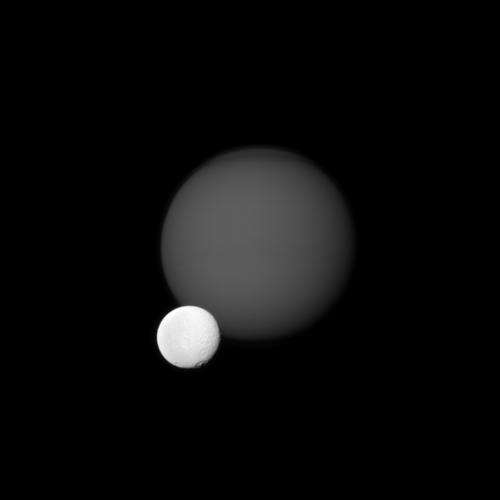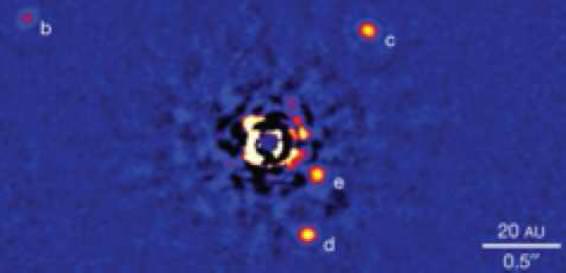Cassini Focuses In On Two Moons
by
Ray Sanders on August 8, 2011

Image of
Tethys and Titan taken in green visible light on July 14th 2011 at a
distance of about 3.2 million kilometers from Titan. Image Credit:
NASA/JPL/Space Science Institute
In this new image from the Cassini Imaging Team
Saturn’s moon Titan looks a little out of focus compared to the sharp,
cratered surface of Tethys, seen in the foreground. But that’s only
because Titan’s hazy atmosphere makes the moon look blurry. Titan’s
current atmosphere is thought to resemble Earth’s early atmosphere, so
we could be looking at an analog of early Earth.
And so, the
Cassini mission is sharpening our understanding of Saturn and all its
moons, but it might help us understand our own planet, as well.
[click to continue…]
by Steve Nerlich on August 6, 2011

The way Hollywood envisions moving at light
speed doesn't really work - since it still implies that you move a
certain distance over a certain time period. As far as a photon is
concerned, it does neither. Source: zidbits.
From a photon’s
point of view, it is emitted and then instantaneously reabsorbed. This
is true for a photon emitted in the core of the Sun, which might be
reabsorbed after crossing a fraction of a millimetre’s distance. And it
is equally true for a photon that, from our point of view, has travelled
for over 13 billion years after being emitted from the surface of one
of the universe’s first stars.
So it seems that not only does a
photon not experience the passage of time, it does not experience the
passage of distance either. But since you can’t move a massless
consciousness at the speed of light in a vacuum, the real point of this
thought experiment is to indicate that time and distance are just two
apparently different aspects of the same thing. [click to continue…]

Planetary system of HR 8799
imaged by Marois et al (2010). The central star is of spectral type A
with a mass of 1.5 solar-masses at a distance of 128 light-years from
the Sun. The planets have the masses of Mb = 7MJ , Mc = Md = 10MJ , and
Me = (7?10)MJ , with semimajor axes of 68, 38, 24, and 14.5 AU,
respectively. Figure with the permission of NPG.
It is our
general understanding of solar system composition that planets fall into
two categories: gas giants like Jupiter, Saturn, Neptune and Uranus…
and rocky bodies that support some type of atmosphere like Earth, Mars
and Venus. However, as we reach further into space we’re beginning to
realize the Solar System is pretty unique because it doesn’t have a
planetary structure which meets in the middle. But just because we don’t
have one doesn’t mean they don’t exist. As a matter of fact,
astronomers have found more than 30 of them and they call this new class
of planet a "Super-Earth”. [click to continue…]


